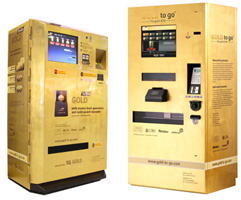Rahat Tasneem, the maiden contestant to win the prize money of Rs one crore in the fourth season of popular show 'Kaun Banega Crorepati' (KBC) is confidence personified, a trait which was even lauded by the show's host megastar Amitabh Bacchan. Coming from a small town of Giridih in Jharkhand, the 37-year-old says she played well utilising the options of 'phone a friend', 'double dip', 'expert advice' and 'audience poll' effectively.
Rahat said that she was confused initially and had to use the lifelines. "But, from the stage of Rs 3.20 lakh to Rs 50 lakh, I knew my answers and did not require lifelines."
"When Big B asked me where did I get my confidence from, I replied it stemmed from self-belief and the fact that I knew it all," she said.
Rahat won the crore sum by opting for 'double dip' to a question about which state did the first woman president of an African nation, belong.
"I was confused so I used my last lifeline (double dip)," she said adding she quit the game as she did not know the answer of the jackpot query of Rs 5 crore on the first heart transplant. "I did not have any lifelines left."
The lucky housewife had only Rs three in her mobile phone as balance when it began all, with a question on Hindu mythology on October 16. "I decided to take a chance and send the SMS," Rahat said.
"When Big B asked me where did I get my confidence from, I replied it stemmed from self-belief and the fact that I knew it all," she said.
Rahat won the crore sum by opting for 'double dip' to a question about which state did the first woman president of an African nation, belong.
"I was confused so I used my last lifeline (double dip)," she said adding she quit the game as she did not know the answer of the jackpot query of Rs 5 crore on the first heart transplant. "I did not have any lifelines left."
The lucky housewife had only Rs three in her mobile phone as balance when it began all, with a question on Hindu mythology on October 16. "I decided to take a chance and send the SMS," Rahat said.











